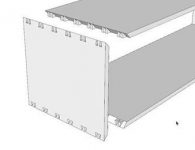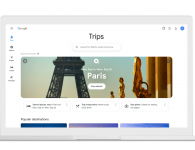

Determining the price of a good or service usually requires a lot of research. It can take days, or even weeks, to collect all the information needed to make an informed decision on pricing, something that can be problematic for a small business. There are ways to help gain clarity, however.
By better understanding their clients, a company can leverage things that it knows about itself and its competition to help inform its pricing decisions. This, in conjunction with clearly defining fixed and variable costs, along with a good amount of A/B testing, can significantly reduce the amount of stress and guesswork that a business faces when trying to discover an optimal market price.
To help local small business owners learn more about which elements are most important to pay attention to, members of the Forbes Los Angeles Business Council, below, discuss their key considerations when trying to discover the right price to charge for their products or services. Here is what they look at:
Members discuss a few ways you can figure out the best prices for your products or services.
Photos courtesy of the individual members
1. Your Reputation
Treat your first 25 customers like family. They took an enormous risk on you and increasing prices just isn’t the right thing to do. Reputation matters more than incremental revenue from your early customers. Revenue from clients 25-10,000 is what really matters, and it’s a good reputation that will help you get the next 10,000 customers. – Mike Whitmire, FloQast
2. Value You Generate For Your Client
How much you charge for your product or service should be in direct proportion to the value you are generating for your client. You have to decide who is your ideal client and set your prices accordingly. Not all buyers of your service are the same—some may want a white glove treatment and be willing to pay for it, whereas some may be focused on the lowest cost. – Beth Worthy, GMR Transcription Services, Inc
3. Direct And Fixed Costs
Find out the costs involved with running your business in order to be financially informed. You can split costs into two categories: fixed and direct. Fixed costs are expenses that come every month, regardless of sales. Direct costs are the expenses you accumulate via the production and delivery of your products and services. Give careful consideration to what your time is worth. – Christine Mendoza, Face & Bawdy
4. Your Customers’ Expectations
Customers are key—what does your customer want from your product and service, and does price play a key factor in their decision? If so, what motivates them to spend—is it the lowest price or the value of the product/service they’re purchasing? This type of insight will help determine if your pricing strategy is a fit (and profitable) for the market you are targeting. – Susan Levine, Career Group Companies
5. A/B Testing
Don’t guess at your pricing strategy. Instead, use A/B testing to scientifically determine the most profitable price point. Sometimes a price increase improves conversion rates, as well as margins. Sometimes a lower price will net you higher profits due to better conversions. You will never guess the best (most profitable) price point, but you can always rely on the proven science of A/B testing. – Benny Traub, Student Marketing Agency
6. Consumer Perception
Pricing strategy is critical to the success of a product or brand. I suggest that you think about what the price signals to the consumer. Decide if you want to price above your competition and signal that you are premium, or below your competition and signal to consumers that you are accessible. Keep in mind that pricing will help support your positioning, and shape the perception of your brand. – Jessica First, Kilter
read more at http://www.forbes.com/entrepreneurs/ by Expert Panel, CommunityVoice
Business








